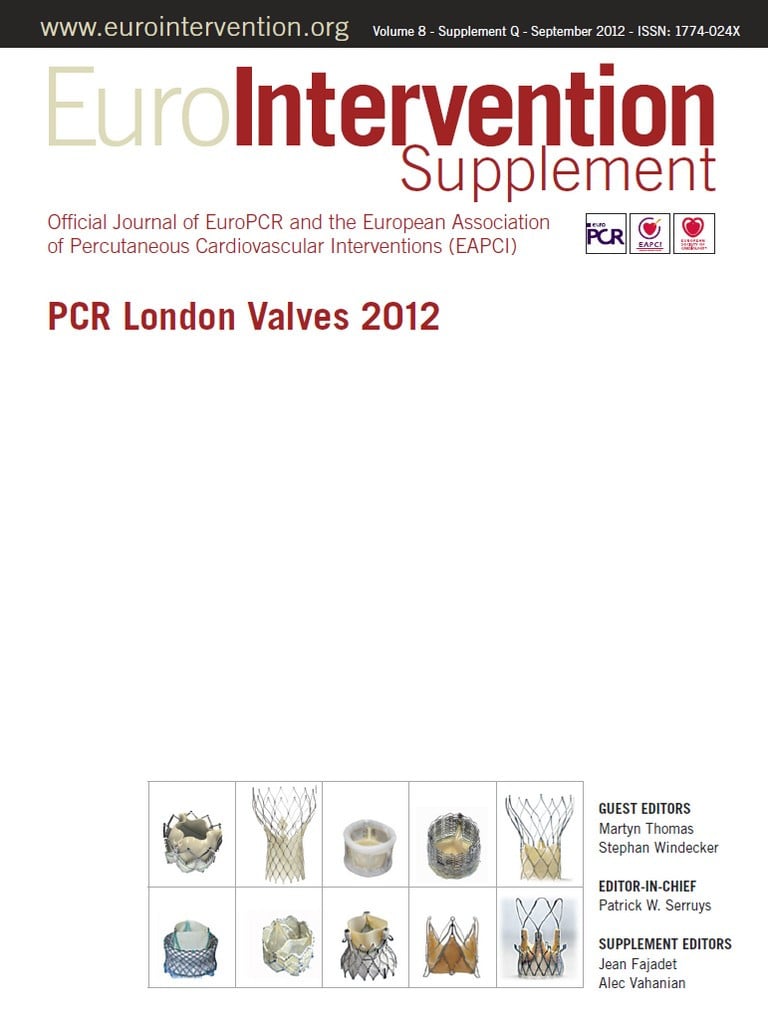![]()
Vascular access in TAVI
The European experience with the direct-aortic approach for a self-expandable transcatheter aortic bioprosthesis implantation
Aims: The self-expanding CoreValve prosthesis is implanted retrogradely usually via the femoral or subclavian arteries. However, the transcatheter aortic valve implantation (TAVI) population of elderly patients with severe aortic stenosis is also often affected by severe iliac-femoral vasculopathy or deemed to carry a high risk of vascular injury.
Methods and results: All European centres with experience of CoreValve implantation through a direct aortic approach were surveyed. All 15 centres with three or more implants were invited to contribute procedural data and outcomes onto a dedicated database. We enrolled 151 patients treated in 15 centres in nine countries in Europe and Israel. Mean patient age was 80.8±6.4 years, 46% of patients were female. The mean logistic EuroSCORE was 26.6±16; 85% of patients were in NYHA functional Class ≥III. Echocardiographic maximum transvalvular gradient was 80 mmHg and left ventricular ejection fraction was 50%. Peripheral vascular disease was present in 86% of cases and was the main reason for femoral TAVI exclusion. Of the patients, 55% had coronary artery disease and 28% of the patients had undergone previous coronary artery bypass surgery. The procedure was performed in 62% of cases via a mini-sternotomy and in 58 patients through a right anterior mini-thoracotomy in the 2nd intercostal space. In 50% of cases the CoreValve 29 mm was implanted. In all patients after valve deployment, the mean aortic gradient immediately dropped to ≤5 mmHg. Procedural success was achieved in 97% of cases. There were no procedural deaths and 30-day mortality was 8.6%. The incidence of stroke was 3.9% and 20% of patients required a new permanent pacemaker. Median post-operative hospitalisation was 10 days.
Conclusions: Direct aortic access is a feasible approach for TAVI with the self-expanding CoreValve prosthesis. These initial results with this technique are encouraging given the high-risk patient cohort (with a particularly high incidence of concomitant vascular disease).

